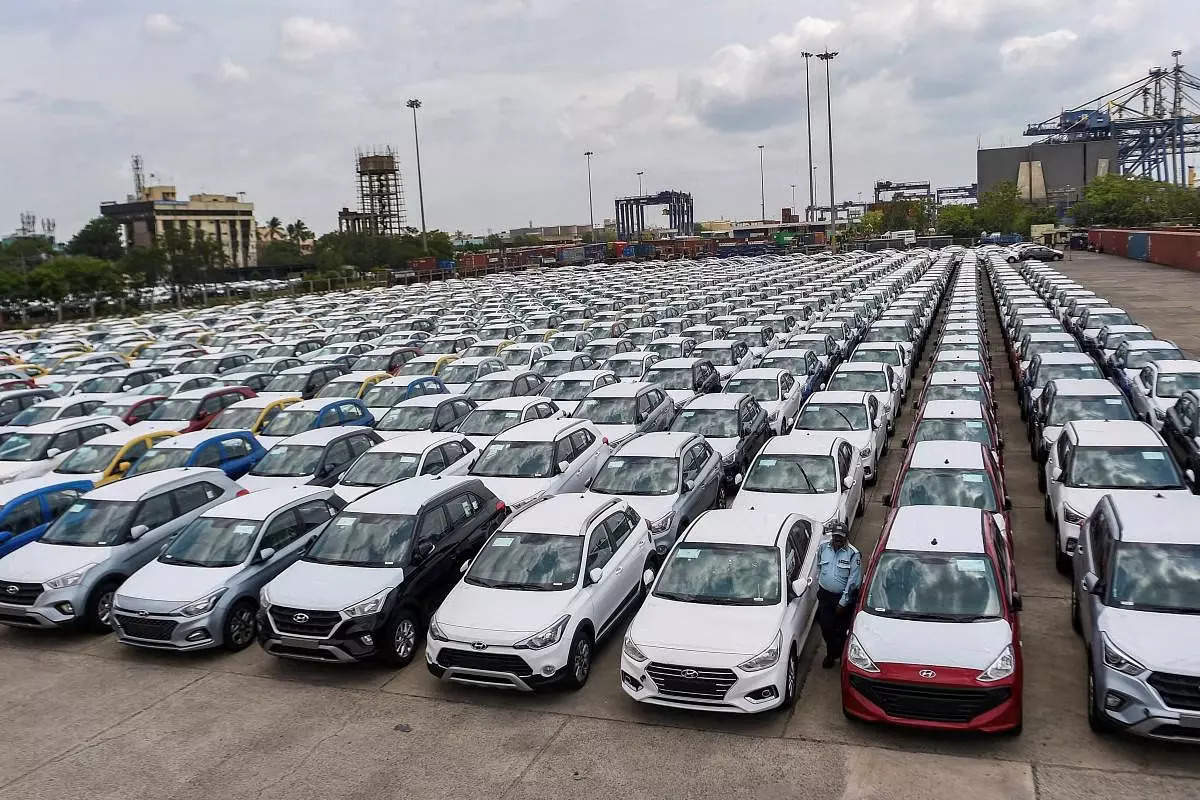
New Delhi: In the midst of the auspicious Navratri days, the auto industry is reflecting a positive demand momentum for the overall festive season this year. With healthy bookings, enquiries and walk-ins, the confidence is strong, however, the industry is in a wait and watch mood to witness the best-ever sales for the festive season this year. The promising season began with Onam and Raksha Bandhan in August and will go on till Diwali on November 14. This also includes a 15-day Shraddh period which is considered as inauspicious and customers do not prefer buying big ticket items like cars.
Festive months in the country usually account for about 23%-26% of annual sales volumes of the auto industry. Earlier, the highest ever festive season dispatches were in 2020-21 at 9.34 lakh units.
According to Manish Raj Singhania, President, FADA, stock level for passenger vehicles (PVs) is at 65 days. Most dealers are optimistic about the upcoming festive season. While he stated that the rural sentiment is good, he believes some kind of traction is required for two wheeler demand in rural areas.
“Usually people have a tendency to accumulate their savings and wait for auspicious days, easy availability of vehicle financing , they tend to buy goods from FMCG or automobiles. Last year during the festive season, rural markets responded well. The two-wheeler sales, which marked a downturn in almost nine months of the year, picked up in the three months of festive season,” he said.
However, he said that the Navratri days will pave the way for the demand during the festive season. “Majority sales take place on the first, fifth and eighth day of Navratri. Dussehra is a festive holiday but dealers try to arrange for deliveries on that day.”
Nikunj Sanghi, Managing Director, JS Fourwheels, said, “The confidence level for the ongoing festive season among the consumers is good. Sentiment in the rural areas and tier-2 cities has also been positive. Rural income levels are good because relatively the monsoon has been good, the crop has been good, agriculture and commodity prices are holding up.”
Inventory levels are high for both PVs and 2Ws. But it does not seem like a concern as it is in anticipation of a good festival season. 2Ws is doing better than what it was last year.
As per the VAHAN data, the retail sales during the initial days of Navratri have been on a slower start than expected. Even when compared to last year, they are not very encouraging but the confidence is there because walk-ins, bookings, inquiries are very healthy.
Experts suggest the spending level of the government is good owing to the upcoming elections. MSP prices have been increased.
However, a dealer in Chandigarh noted that the retail sales in the Navratri have been better but not as much as the high stock levels that the dealers are holding. He ascertained that this year will not be the best-ever festive season
Amit Garg, Managing Director, Shiva Motors said it will be a record festive year. “This kind of demand in the festive season we are seeing after 4-5 years.”
To ensure a refreshed portfolio during festive season, most automakers launch new and facelifted versions of their models during the first nine months of the year.
Shashank Srivastava, Senior Officer- Sales and Marketing, Maruti Suzuki, said last year sales during Navratri were much larger because it also coincided with the month-end. So a direct comparison for the initial days of Navratri could be a little misguided. We need to wait and watch till the end of Navratri because then we will know the real impact during this period. But the festive season of 40 days is expected to clock sales of 1 mn units.
Tarun Garg, COO, Hyundai Motor India, said, “With production capacity augmentation, steady reduction of pending bookings and a strong influx of fresh bookings, this year we anticipate 8% to 9% growth in sales during the festive season. SUVs continue to be the preferred choice among consumers.”
SUVs contribute to about 60% of Hyundai’s overall dispatches. The carmaker said it has seen higher penetration for variants with connected and safety features. In 2023, the company augmented its production capacity at the Sriperumbudur facility, scaling up to fully utilise it at 8.20 lakh units.
“The semiconductor shortage has almost subsided, and we are working at full throttle.This represents a significant improvement from the previous two years, during which dealers held stock for only 8 to 10 days due to the semiconductor shortage situation,” Garg said.
The maker of Creta said key financiers are offering schemes like 100% on-road funding, lower interest rates & processing fees waiver for Hyundai customers. Last month, the automaker witnessed 16% of its retail customers moving between showroom and online channel during their buying journey.
“We expect the industry growth to be strong in the festive season. The electrification trend is set to strengthen further, with multiple offerings in the market, ranging from affordable to highly aspirational cars and on the back of policy support. In FY24, we aim to continue to post growth on the back of more new launches and strong demand for all our products,” a Tata Motors spokesperson said.
Luxury carmakers to post record sales
The luxury car market is inching towards a record year as the three German brands – Mercedes-Benz, BMW and Audi have sold 27,878 units from January to September this year. Previously, the best for the market was touched in calendar year 2018 with a sale of 40,000 units.
According to Santosh Iyer, Managing Director & CEO, Mercedes-Benz India, the company’s 11% YTD growth is attributed to a product offensive strategy. “Luxury is still 1% of the total market but people’s propensity to spend on luxury goods is increasing. The sentiment is backed by India’s GDP growth, stock market movements and more women buyers are entering the luxury market.”
“Q1 was for launches, Q2 was the ramp up phase and since supply starts in Q3, we expect a very solid festive season,” Vikram Pawah, President, BMW India, said.
Industry analysts cite development of infrastructure and the positive sentiment of the overall economy as a major macroeconomic factor supporting growth. Compared to international markets, India is on a roadmap to have the biggest growth story in the world, according to industry players.
















